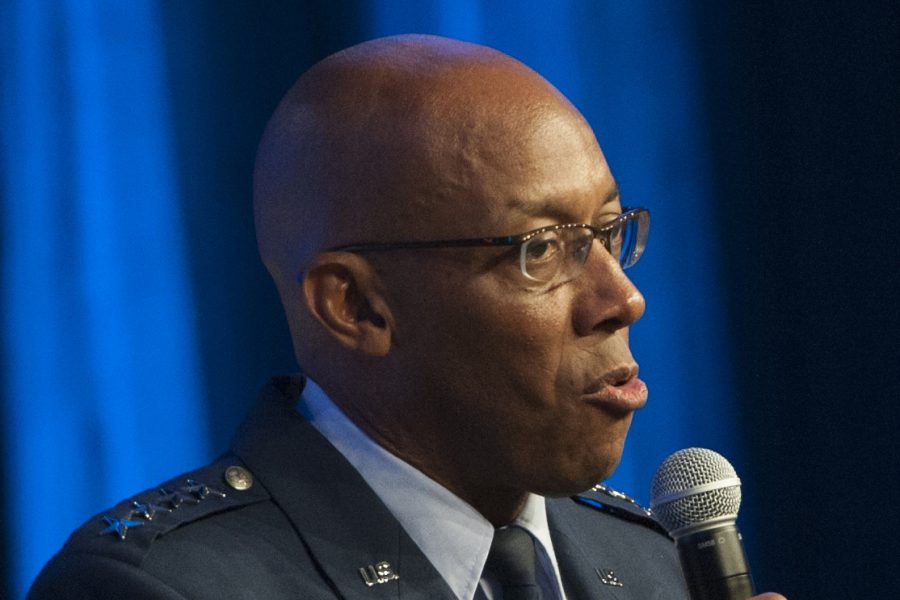The Air Force inspector general is conducting a sweeping review of the service’s readiness assessments and reporting, the year after a Pentagon-wide order directed the armed forces to improve the state of key fighter fleets, according to the service’s presumptive next Chief of Staff.
Air Force department leadership told the inspector general in mid-March to begin the classified review, Pacific Air Forces boss Gen. Charles Q. Brown Jr. told the Senate Armed Services Committee ahead of his May 7 confirmation hearing. The review’s findings will shape the service’s path forward as it looks for more comprehensive metrics for whether it can spring into action.
In 2018, then-Defense Secretary Jim Mattis challenged the services to ensure that 80 percent of their F-16, F/A-18, F-22, and F-35 fleets could fly on any given day by the end of fiscal 2019. No Air Force platforms hit the mark.
“The F-16 mission-capable rate reached a high of 75 percent in June 2019, the F-22 mission-capable rate achieved a high of 68 percent in April 2019 and the F-35 mission capability rate climbed to a high of 74 percent in September 2019,” Brown wrote.
He added that overall readiness increased 16 percent from April 2018 to February 2020. In that same time, the 200 or so unnamed “pacing units” required for the first 30 days of a war plan, improved readiness by 35 percent.
DOD opted not to continue the 80 percent goal in fiscal 2020. Instead, the Air Force is returning to letting commanders in charge of combat and mobility forces decide whether their aircraft are up to par. They are using a new strategic sustainment framework aimed at shrinking supply chain costs over the long run, shifting how aircraft are repaired, adopting predictive maintenance practices, and more.
“The Air Force has made improvements in the readiness of its units. However, the continued high demand for Air Force capabilities continues to impact recovery,” Brown wrote. “If confirmed, I will continue the effort [Chief of Staff] Gen. [David] Goldfein has put on readiness recovery with a focus on recruiting, training, and retaining high-quality Airmen, driving down the average age of our aircraft fleets through modernization, and working with our combatant commanders on balancing current operations tempo with time for our Airmen to train for full-spectrum combat operations.”
He added that the Air Force has yet to see the full extent of how the coronavirus pandemic will negatively affect readiness, saying it’s unclear how long it will take to recover from lost training time.
Last year, Goldfein argued there are better ways to measure readiness than tracking mission-capable rates. He pointed to the amount of time it takes to get people and aircraft ready to deploy, and how many elements of the force are ready to go at once.
Training, flying-hour funding, range improvements, sustainment, and time in the air are more holistic metrics of whether the Air Force can execute its missions, Goldfein said.
The Heritage Foundation recently suggested that lawmakers should include a provision in the fiscal 2021 defense policy bill to “re-establish standing operational readiness inspection teams trained to evaluate the ability of units to rapidly mobilize, generate, and fly combat sorties.”
“These teams should be formed immediately to assess wing combat readiness on a recurring two-year cycle,’ the conservative think tank said. “Individual squadron-readiness assessments throughout the Air Force are now conducted by the unit’s squadron commanders themselves, based on the additive metrics of aircraft mission-capable rates, aircrew and maintenance personnel qualifications, spare parts, and other readiness factors. While those metrics certainly measure what units possess, they in no way convey how ready those squadrons are to fight—and few commanders are willing to step beyond those metrics to declare that their own squadrons are not ready for a peer-level conflict.”
Put another way: “A Formula One racing group may possess the personnel, cars, parts, and pieces required to be a team, but that in no way means that this ‘team’ could effectively compete against another that has repeatedly executed the building block subtasks and then tested them all together on a track for time,” Heritage wrote.
But Brown believes legislation to create independent inspection teams would be premature.
Commanders are getting new software to log their unit’s capability and readiness, in line with a 2019 National Defense Authorization Act requirement, Brown said. He also noted a “readiness pathfinder initiative” to gather and analyze more data to better prepare for combat.
An Air Force spokeswoman said May 13 the pathfinder is run by a cross-functional working group involving multiple major commands that started in fiscal 2019 and will continue to develop throughout the year.
“Over the last year, many IG measures have been implemented to further enhance the rigor and accuracy of our readiness assessments and reporting, and these measures are starting to produce the intended results,” Brown wrote.
